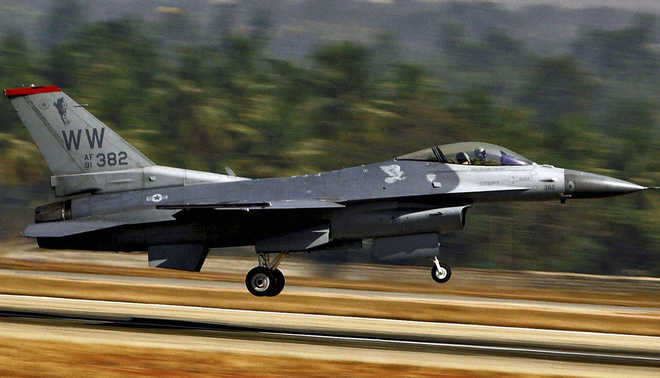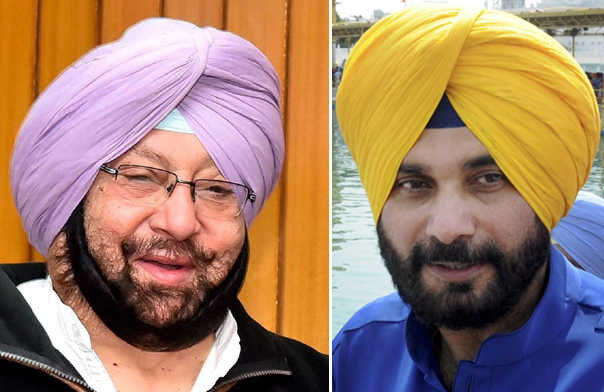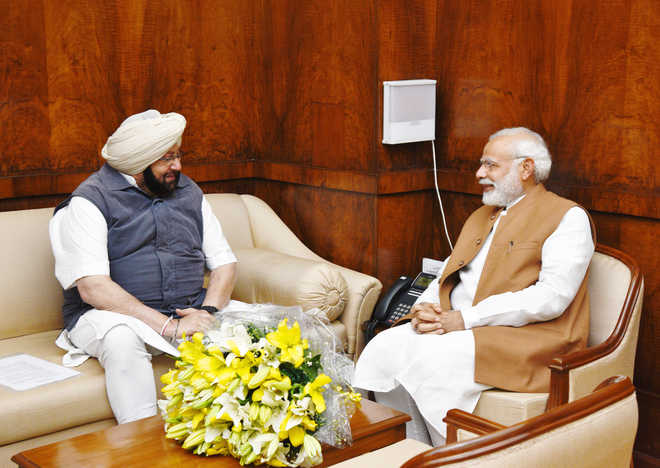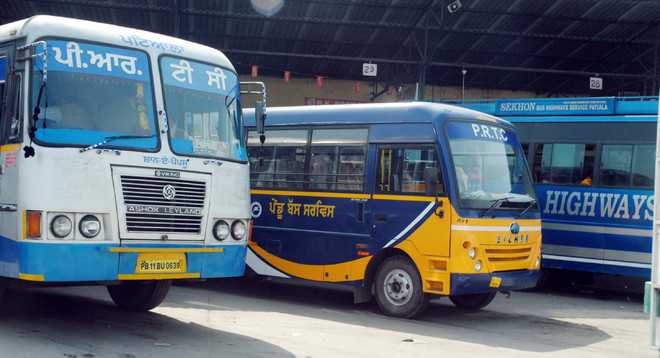Pruning on, 585 cops no more on VIP duty
 The government has already withdrawn security from former Akali leaders and some sitting MPs. Tribune file photo
The government has already withdrawn security from former Akali leaders and some sitting MPs. Tribune file photoJupinderjit Singh
Tribune News Service
Chandigarh, March 26
At least 585 policemen on security duty with politicians and their aides are now available for general policing following the pruning of security. The number is expected to swell further.The development is part of the Congress government’s move to curtail the VIP culture where security guards had become a means to show off one’s status and harass the public.The details of the withdrawn security are stated in an interim report of a committee headed by DGP (Law and Order) HS Dhillon to review security to constitutional and public functionaries.The report submitted to DGP Suresh Arora lists details of the political leaders, including former elected members, their staff and advisers who were given security seven to eight times more than allowed as per rules.Arora said the report would be submitted to the government soon after the pruning of security. “The first phase involved leaders of all political parties. The committee is analysing security given to certain other individuals now.”The government has already withdrawn security from former Akali leaders and some sitting MPs. Prominent among them are Akali leaders Sikander Singh Maluka, who had 31 guards, Gulzar Singh Ranike and Surjit Singh Rakhra, who had 18 and 17 guards, respectively.Those spared are top Akali leaders, including former CM Parkash Singh Badal, Deputy CM Sukhbir Singh Badal and former Revenue Minister Bikram Majithia as they are availing Z-plus security.
Badals spared
- The details of the withdrawn security are stated in a report of a committee headed by HS Dhillon
- Those spared are former CM Parkash Singh Badal, Deputy CM Sukhbir Singh Badal and former Revenue Minister Bikram Majithia
Post-riots, slew of rewards, reforms in Gurdaspur jail
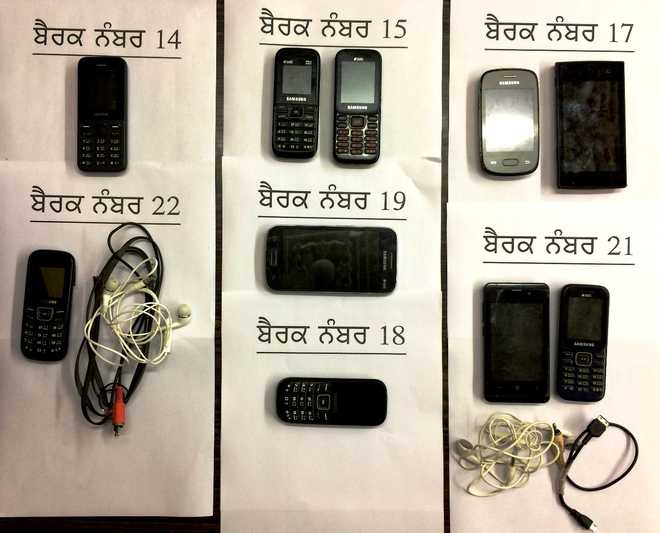 Cellphones seized from the jail. Tribune photo
Cellphones seized from the jail. Tribune photoTribune News Service
Chandigarh, March 26
The Gurdaspur prison authorities have announced several rewards for inmates who showed “exemplary behaviour” during the rioting in the jail on Friday night.According to an official spokesperson, the jail authorities presented four barracks with TV sets, while giving the go-ahead for the establishment of a bakery unit for prisoners desirous of doing factory work.More than 25 prisoners who had requested their transfer to other prisons for personal reasons have been shifted to the jails of their choice/hometown.About four dozen cases of leave, pending with the DC’s office, have been cleared, the spokesperson added.The barrack in which trouble started will be converted into an activity centre, with computer, English, yoga and music classes set to commence next week.A special IGNOU enrolment drive has started in the prison, with 31 inmates responding to the prison officials’ initiative to join various courses (BA, LLB etc).
10 mobile phones seized from Hoshiarpur prisonHoshiarpur: Ten mobile phones, two chargers and two headphones were recovered from various barracks of the Hoshiarpur jail during a search that started last night and continued till the wee hours of on Sunday. Jail Superintendent Vikramjeet Singh Panthey stated that the search was conducted by the prison staff led by Deputy Superintendent Harbhajan Singh, Assistant Superintendent Asha Nand and Naginder Singh — on the directions of ADGP (Jails) Rohit Chowdhury. One mobile phone each was recovered from barrack numbers 14, 18, 19 and 22 and two each from barrack numbers 15, 17 and 12. None of these phones had a SIM card. The city police station has been asked to investigate the matter and take action against the accused. OC
Ministers take houses meant for Speaker, Leader of Oppn
AAP says govt should follow the set practice
Congress minister Charanjit Singh Channi
Rajmeet Singh
Tribune News Service
Chandigarh, March 26
Even as the Congress government opened its inning by taking steps to shun the VIP culture, some of his ministers have taken fancy to particular government accommodation.Two Cabinet ministers have preferred houses at Sector 2 here which are designated for the constitutional posts of the Speaker and the Leader of Opposition. The move has invited strong criticism from AAP.In the house allotment cleared by the Chief Secretary, Cabinet Minister Charanjit Singh Channi has retained House No. 46 otherwise designated for the Leader of Opposition. Prior to Channi becoming the CLP leader in the last Assembly, the house remained with Sunil Jakhar and Rajinder Kaur Bhattal in their capacity as the Leader of Opposition.Channi claimed that it was wrong to say it was designated house of the CLP leader. “The house has been in possession of Bhattal when she was Deputy CM and a minister. Since I am already occupying this house, it was allotted to me. Moreover, the house allotment is the prerogative of the CM,” he said.Leader of Opposition HS Phoolka said he had not raised any demand, but the government should respect the democratic practice in the matter.Similarly, the house designated for the Speaker (House No. 42) has been allotted to Local Bodies Minister Navjot Singh Sidhu. Earlier, the house was in possession of previous Speaker Charanjit Singh Atwal. The new Speaker has been allotted House No. 10, which was earlier allotted to Madan Mohan Mittal, BJP minister in the previous government.“The matter may not be raised since the Speaker is from the ruling party. But it is against the democratic practice,” said an official.KP set to be SpeakerWhile Rana KP Singh is set to be elected as the Speaker on Monday, Ajiab Singh Bhatti, Tarsem Singh DC and Vijay Inder Singla are frontrunners for the post of Deputy Speaker.Seats to be finalisedIt is learnt that after AAP objected to seat allocation to its MLAs and those of its allies in the Assembly, a revised seating arrangements as per the party position and defined norms has been given to AAP and the SAD. The seat allocation will be changed after consulting both parties.
Matters of house
- Cabinet Minister Charanjit Singh Channi has retained House No 46 in Sector 2, Chandigarh, otherwise designated for the Leader of Opposition
- The house designated for the Speaker (House No 42) has been allotted to Local Bodies Minister Navjot Singh Sidhu.
Cong MLA asks depts about ‘favours’ sought by Akali leader
 Barinder Singh Pahra
Barinder Singh PahraRavi Dhaliwal
Tribune News Service
Gurdaspur, March 26
Barinder Singh Pahra, Congress MLA from Gurdaspur, has asked government departments to prepare a list of works done by former SAD legislator from GS Babbehali without following a procedure. Babbehali was the Gurdaspur MLA from 2007 to 2017 before Pahra unseated him in the recent Assembly elections.Pahra yesterday convened a meeting of Health, Rural Development and Panchayats and Transport departments, and the Municipal Committee (MC), asking officials to submit details of “favours” sought by the former MLA before March 29. He said based on these inputs, he would present a ‘white paper’ to the state government.The trigger for such a move was snapping of power supply to streetlights. The MC has run up an electricity bill of nearly Rs 13 crore over 10 years. Pahra questioned the civic body as to why the bill was pending for so long.Sources said the MC failed to pay the dues as funds were diverted to other works against the rules. MC chief Narinder Shampy is a Babbehali loyalist. For the past several years, SAD councilors are in majority in the House.
CM for crackdown on traffic violators
Tribune News Service
Chandigarh, March 26
Taking a serious note of the death of eight persons in two major road accidents in less than 24 hours, Chief Minister Capt Amarinder Singh has directed the state Transport Department to expedite the process of review of bus permits and take all illegally plying buses off the roads at the earliest.The Chief Minister has warned the officials concerned that no laxity on these issues will be tolerated.The review process, which covers former Deputy Chief Minister Sukhbir Singh Badal’s Orbit buses that have been in the news for their violation of road safety rules, has already started, an official spokesperson said.He said Saturday’s accident in Barnala, in which four persons were killed, involved a speeding Orbit bus.He has also directed the traffic enforcement authorities to crack down on speeding and violation of traffic rules by vehicles, especially buses, and asked the department to examine the feasibility of installing speed governors in public transport.The Chief Minister has ordered the Transport Department and the traffic police to launch a statewide drive to prevent such mishaps.Capt Amarinder has also asked the department to check the possibility of installation of speed governors in public transport, especially buses and trucks, which are found to be the main reason in a majority of the road accidents in the state. In�December last year, 12 teachers had died in a fog-related road mishap in Fazilka district.
All SHOs transferred in Muktsar
Tribune News Service
Muktsar, March 26
All 10 Station House Officers (SHOs) in the district were transferred today.Inspector Bikramjit Singh had been shifted as the SHO, Lambi; Inspector Narinder Singh as the SHO (City), Muktsar; and Inspector Baljit Singh as the SHO (Sadar), Muktsar.Inspectors Balkar Singh and Boota Singh have been shifted as SHO (City), Malout, and SHO (Sadar), Malout, police stations.The other SHOs and their new postings are: Sub-Inspector (SI) Periwinkle Grewal, Gidderbaha; SI Jaswant Singh, Kabarwala; SI Gurwinder Singh, Bariwala; Inspector Puran Chand, Lakhewali; and SI Paramjit Singh, Kotbhai.A police spokesperson termed the transfers as “routine”, ruling out political interference.Attempts to contact Baljot Singh Rathore, Senior Superintendent of Police (SSP), proved futile. Jaspal Singh, Superintendent of Police (Headquarters), Muktsar, said he was out of station.Muktsar is the home district of SAD patron and former Chief Minister Parkash Singh Badal.
HC asks CS to intervene in marriage palaces’ row
 The Bench was told that incorrect information about sealing of marriage palaces had been provided. file photo
The Bench was told that incorrect information about sealing of marriage palaces had been provided. file photoSaurabh Malik
Tribune News Service
Chandigarh, March 26
The Punjab and Haryana High Court has asked the Punjab Chief Secretary to intervene after the Bench was told about the supply of incorrect information about sealing of marriage palaces. He has been asked to depute a “responsible officer not below joint secretary’s rank for being present in the court on the next date of hearing for rendering assistance.Taking a serious view of the matter, Justice Rajan Gupta also made it clear that the prayer for appointing a local commissioner to conduct a survey would also be considered on the next date of hearing.
As the petition filed by Kulwinder Singh against IAS officer Vishwajit Khanna and other respondents came up for resumed hearing, amicus curiae or the friend of the court Ravi Kamal Gupta referred to the affidavit dated February 28 filed on the state’s behalf. He told the court that the affidavit contained incorrect information. “Some marriage palaces stated to have been sealed are still functioning. Besides, there is nothing to show that any action has been taken against the marriage palaces which have encroached upon the forestland,” he added.The amicus also told the court that “certain such structures” functioning as marriage palaces were near a cantonment area. They were functioning without sanction to operate as marriage palaces. He also sought the appointment of a local commissioner “in the light of affidavit filed by the state”.The state counsel sought additional time to seek instructions and apprise the court. The contempt petition has its genesis in an order passed by the High Court on January 21, 2012.A Division Bench had set a three-month deadline for the state to consider the cases of “shutdown” of marriage palaces after the court was told that the government had framed policy guidelines for regularisation of existing and new marriage palaces.
Govt doles out slew of sops for inmates in Gurdaspur jail
JAILBREAK BID Day after, prison authorities announced several rewards for inmates who showed good behaviour during the rioting
From page 01 CHANDIGARH/GURDASPUR: The Gurdaspur Central Jail authorities announced several rewards and sops for inmates as normalcy returned to the prison on Sunday.
 HT PHOTONormalcy returned to the Gurdaspur Central Jail on Sunday.
HT PHOTONormalcy returned to the Gurdaspur Central Jail on Sunday.
The authorities got cracking on the task of introducing sweeping reforms in the prison, on the directions of Punjab chief minister Capt Amarinder Singh on Saturday. The authorities arranged for a team of doctors to check on inmates in all the barracks. The team did not come across any incident of even minor injury.
In a sign of gratitude for protecting and saving the lives of four staff members during the rioting by about 150 inmates, the jail authorities have presented four barracks with TV sets, while giving a go-ahead for the establishment of a bakery unit for prisoners desirous of doing work.
In another gesture, more than 25 prisoners who had requested their transfer to other prisons for personal reasons have been shifted to the jails of their choice.
Further, nearly four dozen cases of leave, pending with the DC office, have been given the sanction as a reward to inmates who did not join the rioting mob of miscreants, said the spokesperson.
A helpline is being launched in the DC office for expediting parole requests, while arrangements are being made to provide the prisoners with special facilities to meet their relatives for the whole of next week.
The barrack in which the trouble started will be converted into an activity centre, with computer, English, yoga and music classes set to commence next week, the spokesperson said.
Further, a special IGNOU enrolment drive has started in the prison, with 31 inmates responding to the prison officials’ encouragement to join various courses (Matric, 10+2, BA, Basic, LLB).
Talking to HT, jail superintendent Dilbgah Singh Gill said, “Normalcy has returned to the jail and we are in talks with the inmates. A few gangsters and hardcore criminals had created the ruckus. We have formed a peace committee comprising officials and prisoners to look into the issues.”
On the reasons behind the violence, Gill said some inmates claim that warders were rude to them. “But the basic reason is that we intensified checking and surveillance to check flow of drugs and use of mobile phones. Some hardcore criminals felt suffocated and resorted to violence out of frustration,” Gill said.
Inmates had gone on rampage on Friday and the violence escalated through the night, during which warders were beaten up, furniture was burnt and a hole was carved out in the boundary wall of the jail by the prisoners in a bid to flee. The situation was brought under control by SWAT (Special Weapons And Tactics) commandos and other cops numbering around 3,000. Tear gas shells and gunshots were fired to thwart the jailbreak attempt.
Sidhu in full flow as he adds colour to his thanksgiving event in Amritsar East
SIDHU IS VISITING EACH OF THE 153 WARDS OF HIS CONSTITUENCY TO THANK THE VOTERS FOR HIS VICTORY IN THE RECENTLY CONCLUDED ASSEMBLY ELECTIONS
AMRITSAR:From riding an Enfield motorcycle to doing bhangra to the beats of ‘dhol’, taking blessings from elders to helping the handicapped — it was super Sunday for cabinet minister Navjot Sidhu who paid a visit to his Amritsar (East) constituency to thank people for his victory in the elections.
 SAMEER SEHGAL/HTPunjab cabinet minister Navjot Singh Sidhu performing bhangra with party workers at Mudhal village in Amritsar on Sunday.
SAMEER SEHGAL/HTPunjab cabinet minister Navjot Singh Sidhu performing bhangra with party workers at Mudhal village in Amritsar on Sunday.
As part of his thanksgiving initiative, Sidhu is visiting each of the 153 wards of his constituency.
Dressed in black, Sidhu reached Mudhal village of his constituency to kick off his day. A cricketer turned politician who is also a favourite face in television was a star among residents. As many rushed for photographs and selfies, he obliged them all.
Apart from a flurry of public addresses where he promised development of the segment, he also urged the party workers and leaders to stay united.
He met the residents, touched feet of the elders and took their blessings. Spotting a physically challenged on a tricycle, he was quickly took ₹1000 out of his pocket and gave it to him.
As youngsters went crazy for a ‘selfie’ with the star, Sidhu not only obliged them all, but also shook a leg or two to the beats of ‘dhol’ when requested by this fans.
Winding up the visit, he assured the people of his constituency that he would pay back the love and support shown to him through development and better governance.
The three-time Amritsar MP, who left the Bharatiya Janata Party and later joined the Congress in January just days ahead of the February 4 assembly elections in Punjab, won the Amritsar East assembly seat, earlier held by his wife Navjot Kaur, with a margin of over 42,000 votes.





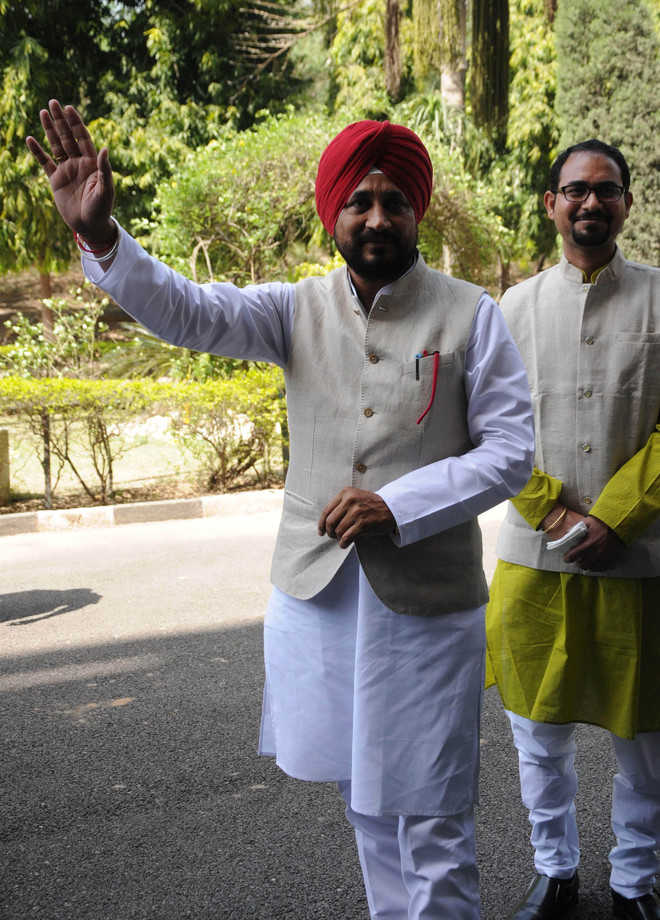


 HT PHOTO
HT PHOTO SAMEER SEHGAL/HT
SAMEER SEHGAL/HT

